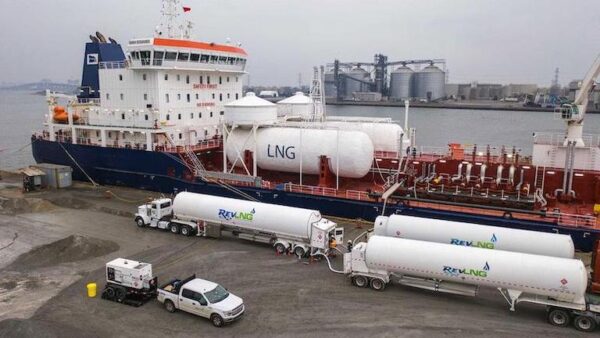|
Getting your Trinity Audio player ready...
|
Clear Seas conducted an analysis of the lifecycle greenhouse gas (GHG) emissions associated with different alternative marine fuels and researched the barriers preventing their adoption. The highlights from this research are summarized in articles and presentations to support policy makers and industry as they are heading towards the goal of reducing 50% of GHG emissions from marine shipping by 2050, as compared to 2008 levels, and achieve net-zero GHG emissions. The resources that result from this research initiative also provide a valuable introduction to anyone interested in learning more about the challenges associated with decarbonizing marine shipping.
Presentation: Making Progress Towards Net-Zero Shipping Through Alternative Fuels
As the global shipping industry begins to chart a course towards 2050 and achieving net-zero emissions, a great deal of interest has begun to be focused on hydrogen-based marine fuels. Options under consideration include ammonia, methanol, and methane. Clear Seas has identified several potential roadblocks in the performance, safety, storage, and feasibility for use of these fuels on existing ships, as well as in the scalability of renewable hydrogen production as a feedstock. This presentation provides the highlights from Clear Seas’ research and identifies critical areas of focus for technology and policy innovation.
Presentation: Unintended Consequences – Identifying Conflict Between the Dual Objectives of Reducing Greenhouse Gas Emissions and Air Pollution from Marine Shipping
To address the impacts of climate change, the marine shipping industry is striving to reduce air pollution and greenhouse gas emissions. But these two objectives are not always aligned and sometimes have unintended consequences. Fascinating trade-offs are revealed. For example, measures to reduce air pollution have, in some cases, resulted in vessels travelling further, thus burning more fuel and emitting more greenhouse gas. Furthermore, certain lower-carbon fuels have potentially higher air pollution emissions while some low-sulphur fuels have been observed to increase particulate emissions, including black carbon that can act in the same way as a very potent greenhouse gas. Examples like these should be carefully considered by policy makers and those setting environmental certification standards because of the potential conflicts they may unintentionally be setting up.



